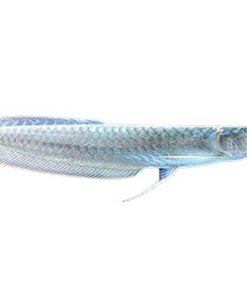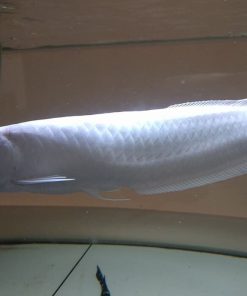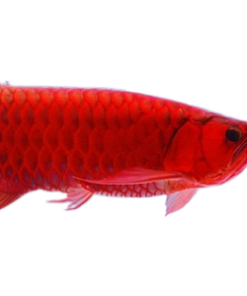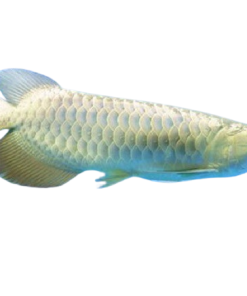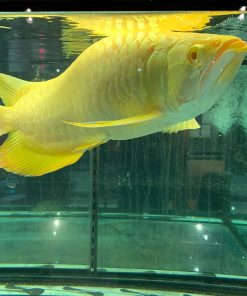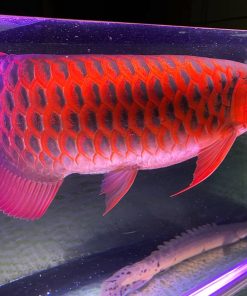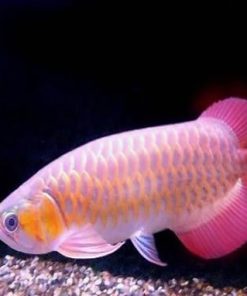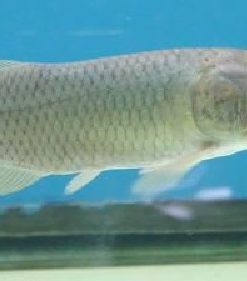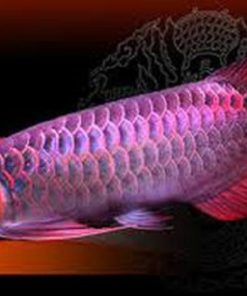Baby Arowana fish for sale
Buy Silver arowana online with free delivery
At Arowanaz.org, we're passionate about silver arowanas. Our team of exotic pet suppliers and fish breeders ensures you get the best silver arowana for sale online This product has multiple variants. The options may be chosen on the product pageBaby Arowana fish for sale
Buy Platinum Arowana
You're looking for the best place to buy a Platinum Arowana, and we can confidently say that you'll find it at Arowanaz.org. Our fish is sourced from the most reputable breeders in the world, and we only sell healthy and high-quality fish. The platinum arowana is one of the freshwater fish with a bony appearance. With its long, slender body and scales that resemble shiny gold, this fish exudes an even more alluring aura. This product has multiple variants. The options may be chosen on the product pageBaby Arowana fish for sale
Buy Jardini arowana online
Jardini Arowana, also known as Gulf saratoga, Australian bonytongue, Pearl arowana, or Northern saratoga, is a freshwater bony fish native to Australia and New Guinea. It is one of two species of fish sometimes known as Australian arowana, the other being Scleropages leichardti. the Jardini Arowana is a fascinating species with its striking appearance, unique behaviors, and captivating color variations. This product has multiple variants. The options may be chosen on the product pageBaby Arowana fish for sale
Our commitment to quality and the environment ensures that you will enjoy yourself. We ensure that each arowana fish is housed in a freshwater tank for the best possible transit because these fish are extraordinarily well-adapted to new settings. The cost previously indicated includes delivery. We breed and export Asian arowana, freshwater stingrays, and freshwater Tropicana fish. We are an ISO 9001 and 14001 accredited company.
This product has multiple variants. The options may be chosen on the product pageBaby Arowana fish for sale
Buy Chili Red Arowana Fish at a cheap price
The Chili Red Arowana is a superstar in the aquarium world. Originating from Indonesia, Malaysia, Thailand, and Singapore, this fish is a showstopper with its vibrant red scales and majestic presence. This Asian Arowana species is not just a fish; it's a piece of living art. Known for its fiery red hue, it's often the crown jewel of any aquarium.
This product has multiple variants. The options may be chosen on the product pageBaby Arowana fish for sale
Banjar red arowana for sale online with free delivery
Arowanaz.org is the best place for Banjar red arowana for sale both small and large. We have a wide variety of Arowana fish for sale and they are all healthy and beautiful. You can find any type of Arowana you want on our website. The Banjar Red Arowana fish, Scleropages Formosus, has a tail that is bright red in shading and scales that are metallic green in shading, similar to the Yellow Tail or Green Arowana. This Arowana is the most reasonable due to its reasonable price and attractive shading. Because they are so lively, this species often causes individuals to behave erratically. This product has multiple variants. The options may be chosen on the product pageBaby Arowana fish for sale
Buy African arowana online with free delivery
At Arowanaz.org, we offer a diverse selection of small and large African Arowanas. Our fish are healthy and stunning, ensuring you find the perfect addition to your aquarium. Whether you’re looking for a specific type or just browsing, you’ll find a wide variety of Arowana fish for sale on our website. The Nile Arowana (Heterotis niloticus), also known as the African Bonytongue, is native to Africa. Despite its name, the African Arowana fish for sale is more closely related to arapaimas than to its South American, Asian, and Australian counterparts within the Osteoglossidae family. This unique relationship places the African Arowana in a distinct position among the bonytongue species.
This product has multiple variants. The options may be chosen on the product pageBaby Arowana fish for sale
Buy Malaysian Red Arowana online
Malaysian Red Arowana species typically grow to around 2 to 3 feet in captivity. They are fast in the water and red in color and grow up to 90 centimeters (35inches) color brightening when fishes grow into adults. This product has multiple variants. The options may be chosen on the product pageBuy baby arowana fish hear me
Welcome to Arowanaz.org, your one-stop destination for premium baby Arowana fish for sale. We understand the joy and excitement of owning these magnificent creatures, and we are here to make your experience as seamless as possible. With our wide selection of Arowana fish, including silver Arowana and red Arowana, you can find the perfect addition to your aquarium.
At Arowanaz.org, we prioritize the health and well-being of our fish. Each baby Arowana undergoes a rigorous selection process to ensure that only the finest specimens are available for sale. Our team of experts carefully conditions and prepares the fish for shipping, so you can rest assured that your new pet will arrive in optimal health.
Understanding Arowana Fish
Arowana fish, also known as dragon fish, are highly sought after for their stunning beauty and graceful swimming style. Native to South America and Southeast Asia, Arow are known for their long, sleek bodies and vibrant colors. They are often referred to as “living fossils” due to their evolutionary history and unique characteristics.
The Origins and Species of Arowana
There are several species of Arowana, including the osteoglossum ferreirai and osteoglossum bicirrhosum. The osteoglossum ferreirai, also known as the black Arowana, is native to South America and is known for its striking black color and silver accents. The osteoglossum bicirrhosum, or silver Arowana, is found in Southeast Asia and is prized for its silver scales and graceful swimming style.
Why Arowana Fish Are Considered Premium
Arowana fish are considered premium due to their exquisite beauty and unique characteristics. Their vibrant colors, elegant swimming style, and long lifespan make them highly sought after by aquarium enthusiasts. Additionally, Arowanas are known to bring good luck and prosperity in certain cultures, further adding to their allure. To enhance their beauty and create a stunning display, you can also choose from a range of premium accessories such as live plants and decorative elements.
Choosing Your Baby Arowana
When choosing a baby Arowana for your aquarium, there are several factors to consider. It is important to ensure that you have the appropriate size aquarium to accommodate the fish, as Arowanas can grow quite large. Additionally, consider the compatibility of the Arowana with other fish species and the overall ecosystem of your aquarium. Taking these factors into account will help you select the perfect Arowana for your aquatic setup.
Where can I find Baby Arowana fish for sale?
You can find Baby Arowana fish for sale at reputable aquarium stores, online fish marketplaces, or specialized Arowana breeders. Ensure the seller has a good reputation for healthy fish and proper care practices to guarantee the well-being of your new pet.
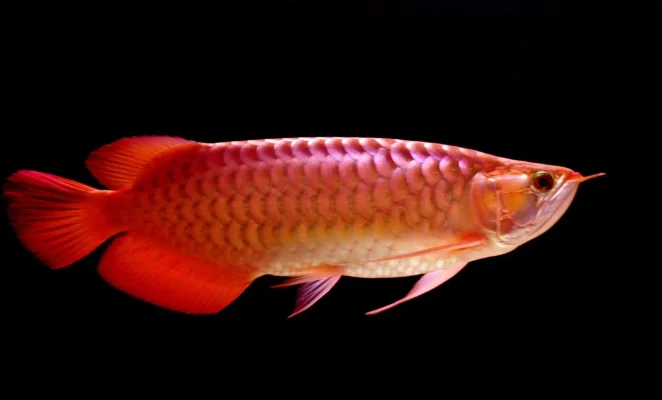
Factors to Consider Before Buying
Before purchasing a baby Arowana, there are a few key factors to consider:
- Ensure you have a spacious aquarium that can accommodate the Arowana’s size.
- Arowanas can grow up to several feet in length, so make sure your tank is large enough to provide ample space for their growth.
- Take into account the compatibility of the Arowana with other fish species in your aquarium.
- Consider incorporating live plants into your aquatic setup to create a natural and stimulating environment for your Arowana.
- Research the specific care requirements of the Arowana species you are interested in to ensure you can provide the necessary conditions for their well-being.
Differentiating Between Arowana Types
There are several types of Arowanas available, each with its unique characteristics. Here is a breakdown of the different Arowana types:
|
Arowana Type |
Description |
|
Silver Arowana |
Known for their silver scales and graceful swimming style |
|
Red Arowana |
Renowned for their vibrant red coloration and majestic appearance |
|
Black Arowana |
Characterized by their striking black color and silver accents |
|
Golden Arowana |
Gleaming with a golden hue, these Arowanas are highly prized for their beauty |
|
Green Arowana |
Featuring a stunning green coloration, these Arowanas add a vibrant touch |
Understanding the different types of Arowanas will help you choose the perfect one for your aquarium, based on your preferences and the overall aesthetic you wish to create.
Caring for Your Baby Arowana
Caring for a baby Arowana requires attention to detail and a commitment to creating a suitable habitat. From setting up the perfect aquarium to providing the right diet and monitoring their health, there are several aspects to consider when caring for your Arowana.
Setting Up the Perfect Aquarium
To create the perfect habitat for your baby Arowana, start by setting up a spacious aquarium that can accommodate their future growth. Incorporate live plants to provide a natural environment and consider adding suitable accessories such as rocks and driftwood to create hiding spots and mimic their natural habitat. It is important to maintain proper water quality, temperature, and lighting to ensure the well-being of your Arowana.
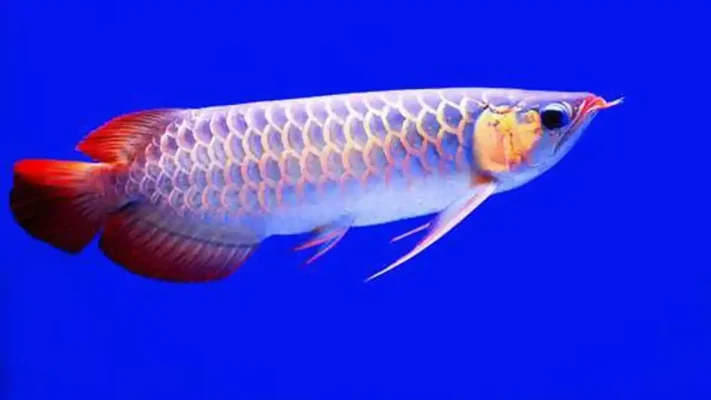
Diet and Nutrition Tips
A balanced diet is essential for the health and growth of your baby Arowana. Feed them a varied diet that includes high-quality pellets, live feeders, and occasional treats such as insects or small fish. It is important to provide a diverse range of nutrients to support their overall well-being. Monitor their feeding habits and adjust their diet as necessary to ensure they are receiving proper nutrition.
Health and Growth: Monitoring Your Arowana
Regular monitoring of your baby Arowana’s growth and health is crucial to ensure they are thriving in their environment. Keep an eye on their appetite, behavior, and overall appearance. If you notice any signs of illness or abnormal behavior, consult a veterinarian experienced in caring for Arowanas. Regular water testing and maintenance will also help prevent health issues and maintain optimal conditions for your fish.
Legal and Ethical Considerations
When purchasing and caring for an Arowana, it is important to be aware of the legal and ethical considerations surrounding these fish. Familiarize yourself with the regulations regarding the shipping and importation of Arowanas to ensure you are compliant with the law. Additionally, opt for sellers who practice ethical breeding methods, promoting the sustainability of these beautiful creatures.
Understanding Arowana Trade Regulations
The trade of Arowanas is regulated to protect their populations and prevent illegal trafficking. Before purchasing an Arowana, ensure that the seller follows the necessary shipping and importation regulations. It is also essential to inquire about their refund policy and guarantee to safeguard your investment. By adhering to these regulations, you can contribute to the preservation of Arowana species and support legal and sustainable trade practices.
Ethical Breeding Practices for Sustainability
Choosing a seller who practices ethical breeding methods is essential for the long-term sustainability of Arowana populations. Ethical breeders prioritize the well-being and health of the fish, ensuring they are bred in a responsible and sustainable manner. By supporting these breeders, you contribute to the conservation efforts and help preserve these magnificent creatures for future generations.
Purchasing Your Baby Arowana
When it comes to purchasing your baby Arowana, there are a few important factors to consider. Firstly, it’s crucial to find a reputable seller who specializes in premium Arowana fish. Look for sellers who offer a refund policy and have a positive reputation in the aqua community. Additionally, consider the shipping options available. A seller that offers free shipping and ensures the safe delivery of your fish right to your doorstep is ideal. By purchasing your baby Arowana from a trusted seller, you can ensure the health and well-being of your new aquatic companion.
Where to Find Premium Baby Arowana for Sale
Finding premium baby Arowana fish for sale can be a daunting task, but with the right resources, it becomes much easier. Online platforms that specialize in exotic fish, such as here at Arowanaz.org, we offer a wide selection of premium Arowana fish. These platforms provide convenience and peace of mind, as they offer doorstep delivery and free shipping. By choosing a reliable online seller, you can find the highest quality baby Arowana fish that are well-conditioned and ready to thrive in your aquarium. Take the time to research and read reviews to ensure you are purchasing from a reputable source that prioritizes the health and well-being of their fish.
What to Look for in a Seller
When searching for a seller to purchase your baby Arowana from, there are a few key factors to consider. First and foremost, look for a seller that offers a refund policy. This indicates their commitment to customer satisfaction and the quality of their fish. Additionally, consider whether the seller has a newsletter or email list. Subscribing to their newsletter can provide you with exclusive deals, updates, and information about new arrivals.
It’s also important to assess the seller’s shipping practices. Look for a seller that takes extra care in packaging and shipping their fish to ensure their safe arrival. By considering these factors, you can find a reputable seller that offers both high-quality fish and excellent customer service.
Baby Arowana fish for sale
The Arowanaz.org website store will provide you with different types of arowana fish for sale including aquatic fish tanks, platinum arowana, Asian arowana, jardini arowana, and baby arowana fish for sale. With sizes and shapes of arowana fish vastly differing from one another, we are convinced that we have the right one that will make your collection of cichlids stand out. Apart from that, we also offer freshwater stingray and black diamond stingray for those looking for unique and exotic fish.
Additionally, we deliver arowana fish directly from our store to your home, so it is possible to purchase your new pet without leaving your house. Moreover, if you find yourself needing guidance to manage your arowana fish, our specialist team will be glad to offer you their care tips.
Don’t forget to sign up for our newsletter to receive exclusive email offers and stay up-to-date on the latest arrivals in our livestock categories, including all types of arowana fish and other exotic species.
Can You Own an Arowana in Your Country?
Owning an Arowana fish depends on the regulations and laws of your country. Some countries have restrictions on keeping Arowana due to their protected status. It’s important to check the legal requirements and regulations in your country before purchasing an Arowana. Additionally, consider the shipping regulations if you are purchasing from another country to ensure a smooth and legal import process.
How to Identify a Healthy Baby Arowana?
Identifying a healthy baby Arowana is crucial to ensuring its long-term well-being. Look for signs of vibrant coloration, active swimming behavior, and clear eyes. A healthy Arowana should have a good appetite and show steady growth. Providing a balanced diet and maintaining optimal water conditions will contribute to your baby Arowana’s overall health and vitality.
What Size Tank Does My Baby Arowana Need?
The size of the tank for your baby Arowana depends on its current size and the expected growth rate. As a general guideline, a tank size of at least 50 gallons is recommended for a baby Arowana. However, it’s important to consider the growth potential of the species and plan for a larger tank as the fish matures. Providing ample space and suitable tank conditions will contribute to the overall health and well-being of your baby Arowana.
How Often Should I Feed My Baby Arowana?
Feeding your baby Arowana should be done with care and attention to their dietary needs. Arowanas are carnivorous fish and require a diet rich in protein. Feed your baby Arowana small portions of high-quality fish pellets or live foods twice a day. Monitor their appetite and adjust the feeding frequency based on their growth and activity level. Maintaining a balanced and nutritious diet will support the healthy development and growth of your baby Arowana.
What Are the Common Health Issues in Arowanas?
While Arowanas are generally hardy fish, they can still be prone to certain health issues. Common health issues in Arowanas include bacterial or fungal infections, parasites, and swim bladder disorders. Look out for signs such as loss of appetite, lethargy, abnormal swimming behavior, and visible signs of disease. The key to preventing health issues in Arowanas is maintaining optimal water quality, providing a balanced diet, and regular observation of their behavior and appearance.
Can Baby Arowana Fish Be Trained?
Yes, baby Arowana fish can be trained to some extent. They can be conditioned to recognize their owners and respond to cues during feeding time. Regular interaction and positive reinforcement can help in developing a bond with your baby Arowana. However, it’s important to remember that Arowanas are primarily instinct-driven and may not exhibit the same level of trainability as other domesticated pets.
How Long Does It Take for a Baby Arowana to Reach Full Size?
The growth rate of a baby Arowana can vary depending on factors such as species, diet, and tank conditions. On average, it takes around 2-3 years for a baby Arowana to reach its full size. During this time, the fish goes through various growth stages, and proper care and nutrition contribute to healthy and steady growth.
What size tank does a baby Arowana need?
The size of the tank needed for a baby Arowana depends on its current size and growth rate. Generally, a baby Arowana will require a tank of at least 20 gallons to provide enough space for swimming and growth. It is important to consider that Arowanas can grow quite large, so you may need to upgrade to a larger tank as the fish grows to ensure its well-being and comfort. Additionally, Arowanas are known for their jumping ability, so it is recommended to have a securely covered tank to prevent them from leaping out.


